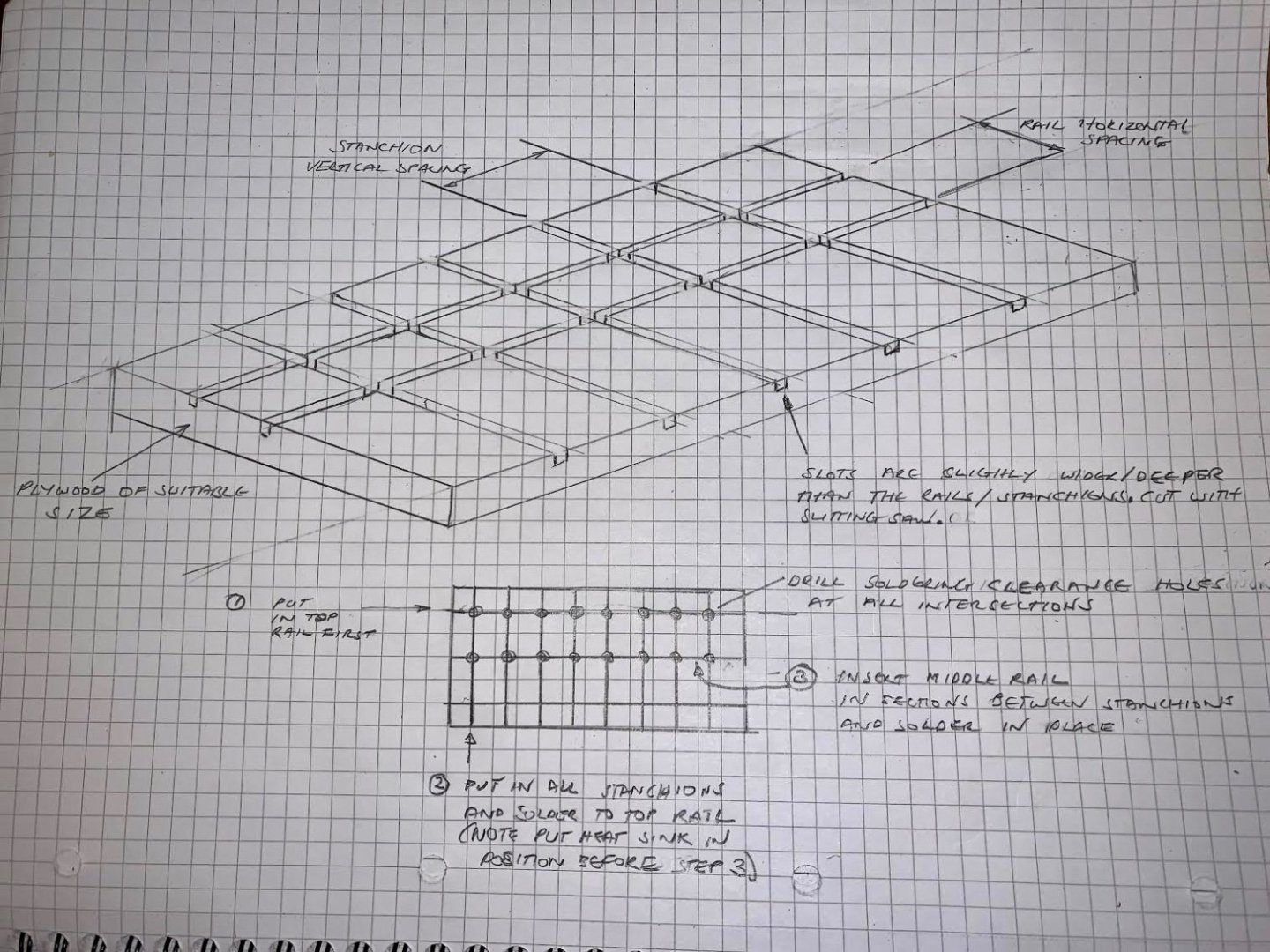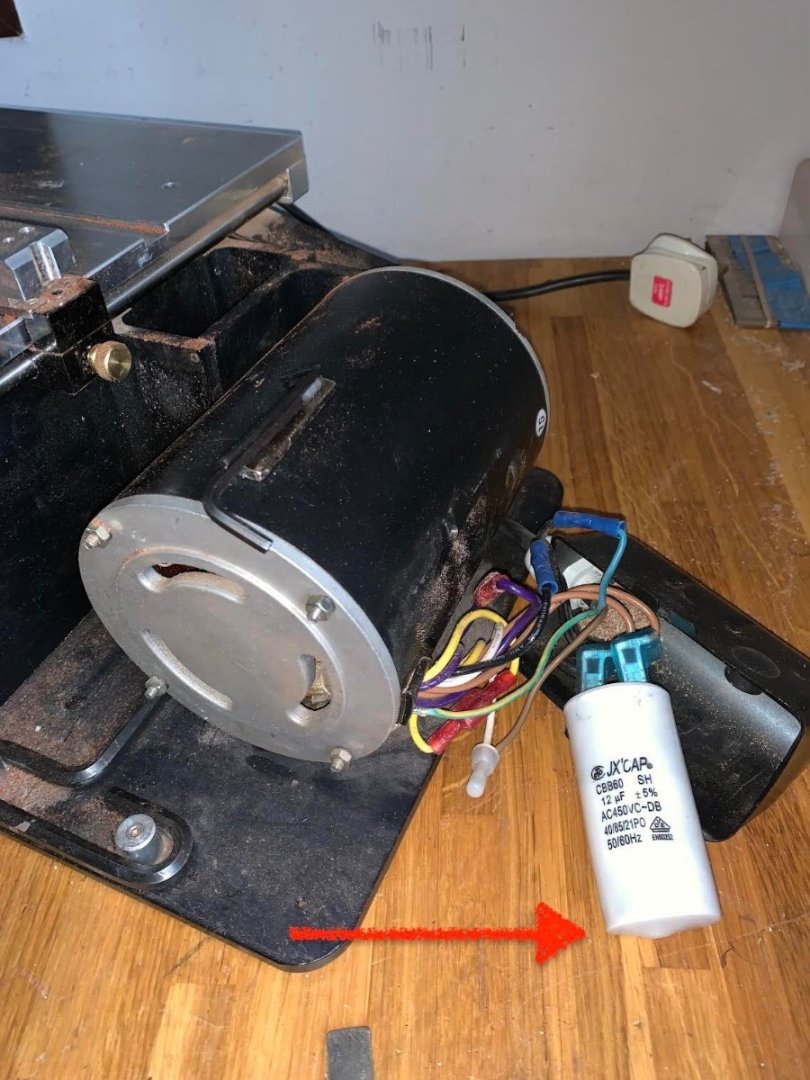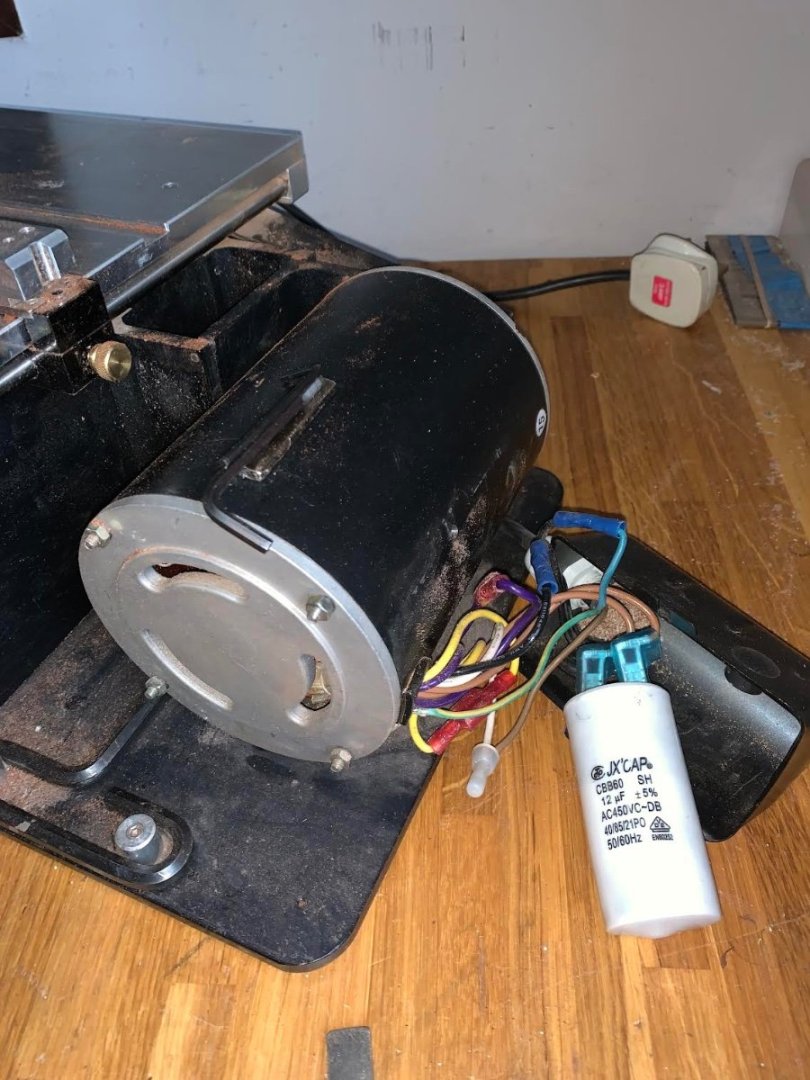-
Posts
3,247 -
Joined
-
Last visited
Content Type
Profiles
Forums
Gallery
Events
Everything posted by KeithAug
-
Brian - I would tend to make a simple plywood jig for this type of operation as follows:- The slots in the plywood are most easily made with a slitting saw on a small table saw - e.g. Byrnes. If the top / middle rails and stanchions are of different diameters use different slot widths. Drilling holes at all the intersections provides clearance for access by the soldering iron tip. The 1, 2, 3 sequence probably makes most sense as continuous runs of the top rail and stanchions will give the best visual effect. The grid of slots accurately controls the position (uniformity) of the finished guard rail. I hope this makes sense? Let me know if it doesn't. Feel free to ignore it if you find a better solution.
-
That is hell of an extensive update Brian - and all those laser cut pieces are making me jealous. As for the rails, is styrene going to be durable enough? Presumably if she is going into a case it will be OK. The dusting could be problematic if it is not being cased. I have a way of getting the brass option very regular if you are not wedded to the styrene option. Let me know if you are interested.
-
Thank you Keith and Gary. I was going to have a productive day in the workshop but it was not to be. My somewhat recently neglected Byrnes saw decided I didn't love it any more so it threw a sulk and after a few hesitant attempts at starting it threw in the towel. If I manually kick over the blade it angrily bursts into life and bites my prodding stick. Ooch! I think I need to buy a new CAP (maybe a bowler). At least I have learned summat (Yorkshire dialect). the 40/85/21 means that its operational range is -40c to 85c and it will withstand 21 days at 95% relative humidity at - 40c. P.S. Note to self - remember not to lick the terminals - it may be less dead than it is pretending to be.
-
Wonderful overhead shots Eberhard. She looks magnificent - that is apart from the crews dereliction of duties on the rope work. Have they been on the schnapps?
-
Eric - I have to agree with Brian - those clamps are enormous. Did you run out of clothes pegs? Deck looking good.
- 254 replies
-
The weather continues to be unseasonably mild with the workshop hovering around 13c. Unfortunately progress has been somewhat disturbed by family commitments. In the following 2 images I have balanced felt tip pens on the floors which are installed at the correct level. The ones without pens are just bracings for the frames. The boiler room floor is just above the keel and hence does little to brace the frames in this area. Additional balsa wood blocks are installed to brace the frames in this area. These will be removed once the planking is suitably advanced. Now for something you will all recognise - a short lived technology no longer with us! I saved these because I thought they would come in handy at some time. I wanted some very thin but stiff shims to insert in the cut lines for the deck. This supported deck edge pieces while the glue dried. I also cut out all the up-stands that were originally used in combination with the alignment rods. I also glued in the prop shaft tube.
-
Ian - my view is that planking is an art not a science. My preference is to start at the deck and make my way towards the keel - however hulls can be very different in shape and what works best for one won't necessarily work best for another. My advice would be not to worry too much about all those youtube videos and just make a start. It was easier before the internet because it was just a case of suck and see. The main thing to bear in mind is that planks should bend in their narrow direction and not in their wide direction. You will find that the first plank naturally wants to go on while only bending in its narrow direction (i.e it follows its natural curvature). Your tendency will be to try and force it to follow a different line (like the deck edge). Doing this forces it to bend in the wide direction. If you force it too much the plank will start to twist producing a clinker effect which is undesirable. I could go on at length but my best advice would be to put a few planks on, then post an update and request advice as you go. Your frame is looking nicely made. The planking is going to be quite difficult across the final 4 frames because they change shape quite dramatically.
About us
Modelshipworld - Advancing Ship Modeling through Research
SSL Secured
Your security is important for us so this Website is SSL-Secured
NRG Mailing Address
Nautical Research Guild
237 South Lincoln Street
Westmont IL, 60559-1917
Model Ship World ® and the MSW logo are Registered Trademarks, and belong to the Nautical Research Guild (United States Patent and Trademark Office: No. 6,929,264 & No. 6,929,274, registered Dec. 20, 2022)
Helpful Links
About the NRG
If you enjoy building ship models that are historically accurate as well as beautiful, then The Nautical Research Guild (NRG) is just right for you.
The Guild is a non-profit educational organization whose mission is to “Advance Ship Modeling Through Research”. We provide support to our members in their efforts to raise the quality of their model ships.
The Nautical Research Guild has published our world-renowned quarterly magazine, The Nautical Research Journal, since 1955. The pages of the Journal are full of articles by accomplished ship modelers who show you how they create those exquisite details on their models, and by maritime historians who show you the correct details to build. The Journal is available in both print and digital editions. Go to the NRG web site (www.thenrg.org) to download a complimentary digital copy of the Journal. The NRG also publishes plan sets, books and compilations of back issues of the Journal and the former Ships in Scale and Model Ship Builder magazines.










